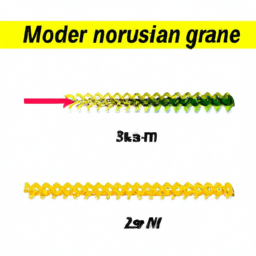Garden Hose GPM How Much
Table of Contents []
How Many Gpm Is A Garden Hose
Introduction
The ability to efficiently water plants and lawns in your garden is key to ensuring their health and wellbeing. Garden hoses have been a major part of garden maintenance throughout the years, offering a convenient way of watering the plants and garden. But in order to better understand the many advantages garden hoses bring to the table, you must first understand their function and specifications. This article will provide an informative overview of the garden hose and how many gallons per minute (GPM) a garden hose is capable of producing.
Garden Hose Overview
A garden hose works by dragging water from a water supply (faucet or spigot) and delivering it to a designated area of the garden. Garden hoses are usually made out of a combination of rubber, fabric, and other materials, such as PVC, which makes them flexible, durable, and lightweight. Garden hoses are available in different lengths, with the average garden hose being typically 25 feet in length, although shorter and longer lengths are available. The size of a garden hose is usually noted in the outer diameter of the hose, which can vary from 1/2 inch to 5/8 inch.
GPM Capacity of a Garden Hose
The GPM capacity of a garden hose is determined by the diameter and length of the hose. Generally speaking, a 1/2 inch garden hose is capable of delivering up to 9 GPM at 60 PSI, and a 5/8 inch garden hose is capable of delivering up to 13 GPM at 60 PSI. It is important to note that these are estimated numbers, as the actual GPM capacity of a garden hose is also dependent on the quality of the hose, as well as the size of the faucet supplying the water to the hose.
Garden Hose Accessories
In addition to the garden hose itself, there are a variety of accessories available that can be used to improve the performance and efficiency of the garden hose. For example, a garden hose nozzle can be attached to the end of the garden hose, which allows for more precise water delivery and can also protect the garden by helping to control the water flow without damaging the plants. Other garden hose accessories include connectors, adapters, and pressure reducers, which can all be used to manage and optimize the water pressure from the garden hose.
Garden Hose Maintenance
To keep a garden hose in good working condition, it is important to regularly clean and maintain the hose. This includes checking the hose for any damage, such as cracks or abrasion, and ensuring that the hose connections are secured. Additionally, the garden hose should be stored in a climate-controlled environment to prevent damage from extreme temperatures, and the hose should be drained after each use to prevent standing water inside the hose and prevent the growth of bacteria.
Safety Tips
When using a garden hose, it is important to keep safety in mind. For example, avoid allowing children or animals near a garden hose while it is in operation, as the high water pressure could cause serious harm. Additionally, do not allow the garden hose to be used as a flotation device to protect against drowning, as the water pressure can cause the garden hose to blow off and cause significant damage.
Summary
Garden hoses are an essential part of garden maintenance, offering a convenient way to water the garden. The gallons per minute (GPM) capacity of a garden hose is determined by the diameter and length of the hose, with a 1/2 inch garden hose producing up to 9 GPM, and a 5/8 inch garden hose capable of producing up to 13 GPM. Additionally, there are a variety of garden hose accessories available to improve the performance and efficiency of the garden hose, and it is important to regularly clean and maintain the garden hose to ensure that it remains in good working condition. It is also important to keep safety in mind when using a garden hose, as the high water pressure can create some potentially hazardous situations.

Previous Page
Next Page
